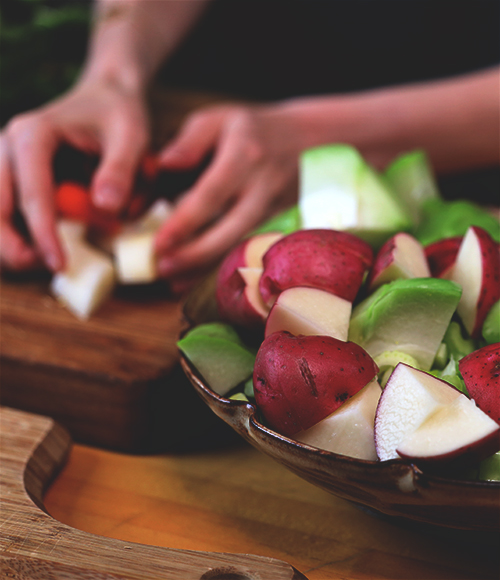Finishing Salts 101: How Best to Use Them?

Finishing salts can be a fantastic and simple way to elevate a dish to give it a special taste and bite, with a subtle crunch.
Depending if the salts come from evaporated sea water, mined rock from the earth, or from boiling, they can vary greatly in their texture, flavor profiles, salinity, mineral and trace elements.
Because finishing salts cost significantly more than kosher or table salt, it is important to learn how to best apply each salt by using them in the right kind of dishes.
Flakey Sea Salt
These large but thin pyramid shaped flakes are great when added to desserts, salads or really any dish. I learned from the cookbook author, Melissa Clark, that flakey sea salt makes food taste more deeply of itself such as, eggs more custardy or tomatoes more sweet.
Flakey sea salt add a nice crackly texture and are not overpowering because their thin texture makes them dissipate quickly.
Maldon is the most common but there is also Jacobsen (Oregon), Hana flake (Japan), Halen Môn (Wales) and Marlborough (New Zealand) flaky sea salt.

Fleur de Sel
Fleur de Sel has a beautiful texture and delicate flavor, which make it great for sweet dishes and desserts.
Compared to flakey salt, it’s more crumbly, smaller and softer. This variety of salt also lingers longer because it contains more moisture and doesn’t dissolve as quickly as other salts.
Fleur de Sel is hand harvested and processed naturally by the sun and wind. It contains minerals from the brine in the marshes of the Camargue in Southern France, such as zinc, potassium, iron, calcium, and magnesium.
The pink algae gives it its distinctive color, which is also what makes the shrimp (and ultimately the flamingos that eat the shrimp) pink in these marshes as well!

Sel Gris
Examples of sel gris, or grey sea salt, include Celtic Sea Salt and Sel de Guérande ( from Brittany, France). It is best sprinkled on roasted meats, fish and vegetables because it has more earthy notes.
Sel gris also has a pebble-like texture that has a more firm crunch than other finishing salts.
The grey color comes from the clay bottom salt beds of where it is hand harvested. This also gives it a mineral flavor and makes it naturally high in calcium, magnesium, and potassium.

Himalayan salt
Its pretty pink hue, mildly spiced flavor, and crisp texture make it a great finishing salt for boldly flavored dishes. Its firm texture is why it is often sold in grinders.
The blush color comes from trace minerals where it is mined from salt deposits in Pakistan, such as in the Potwar Pkateau- which is located south from the Himalaya mountains.
Himalayan salt has some of the higher amounts of minerals compared to other salts. In fact, all 84 essential trace elements are found in this salt. Some of the minerals it’s highest in include boron, chromium, copper, fluoride, iodine, selenium, zinc, and iron.

Red Hawaiian Salt
Red Hawaiian salt, also called alaea salt, is estimated to contain the highest concentration of essential trace minerals of any salt.
This salt gets its color from red volcanic clay (alaea), which also makes it iron rich. The salt mixes with the clay as tidal pools evaporate.

Black Hawaiian salt
Black Hawaiian salt, also called black lava salt, has a slightly sulfurous aroma and does well garnished on eggs, tofu or tempeh.
It is made from sea water that evaporated in pools formed on hardened lava flows and gets its black color from the activated coconut charcoal. It is naturally high in in potassium and calcium.



















Hello!! My name is Kelly
You will learn delicious and healthy recipes that you will want to share with your family! As a feeding therapist, I will also give you tips on how to adapt foods for younger eaters, while including gluten- and dairy-free, and plant-based options.